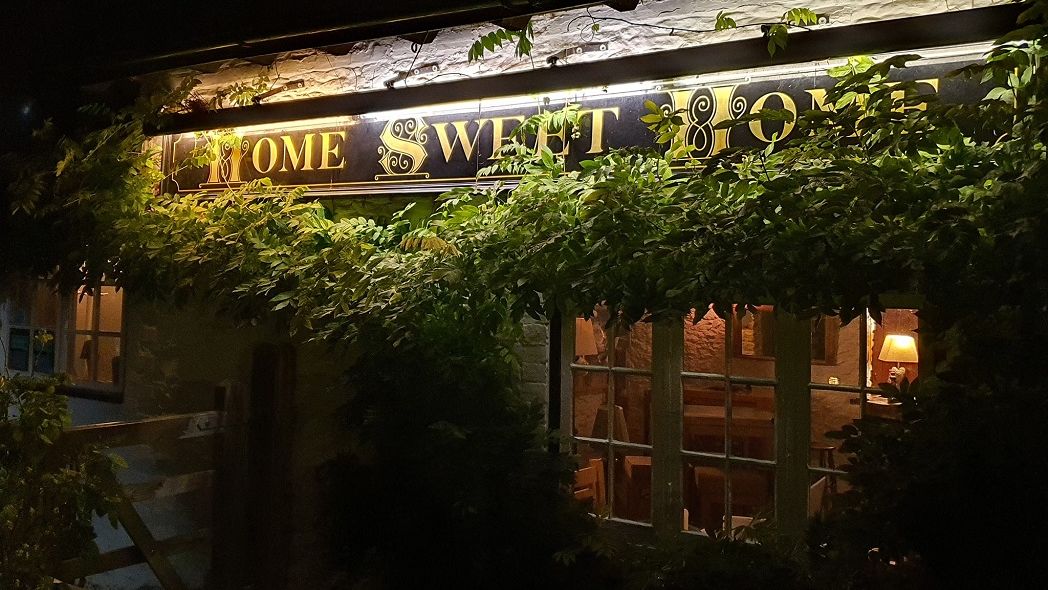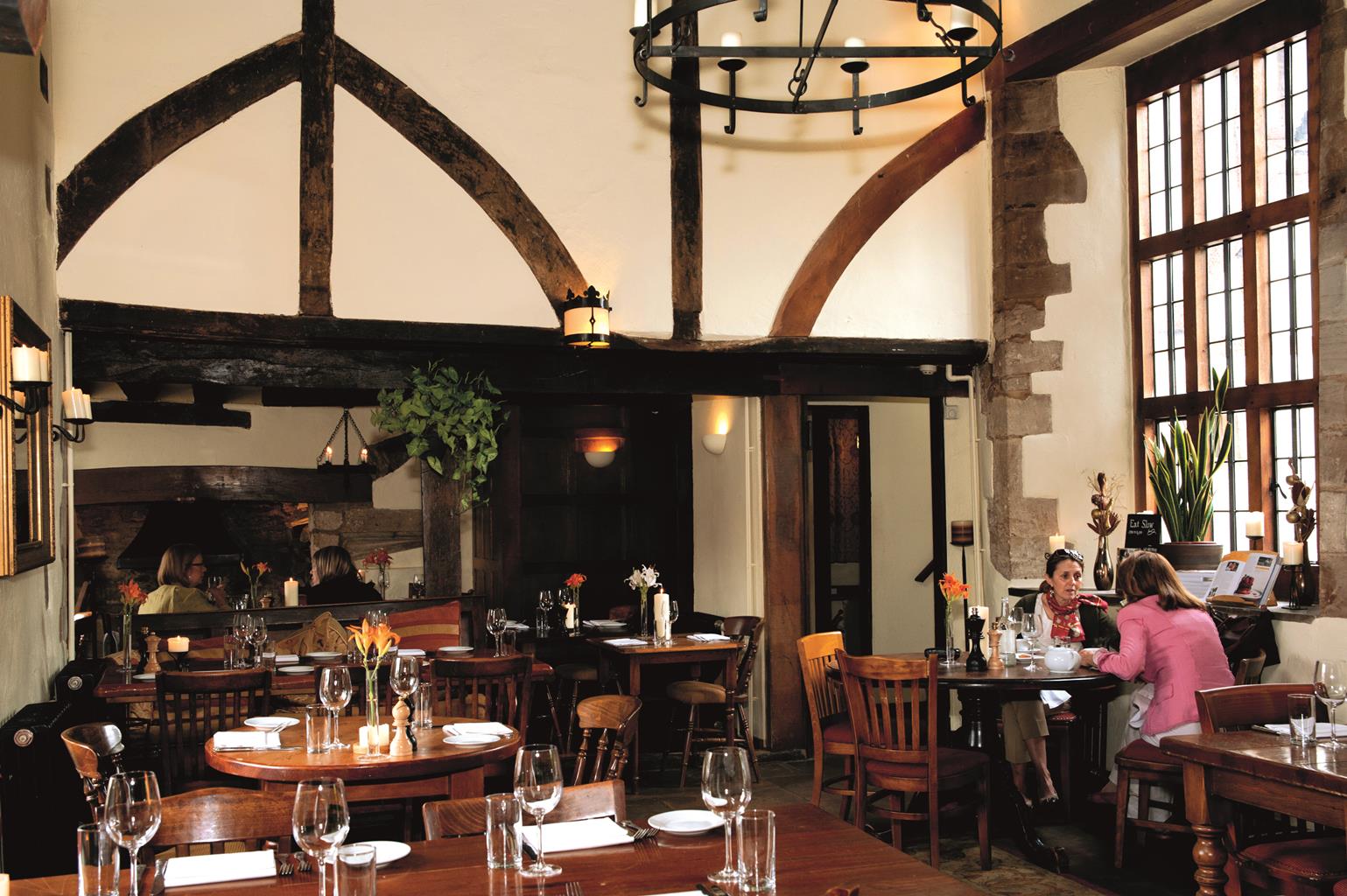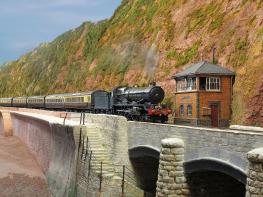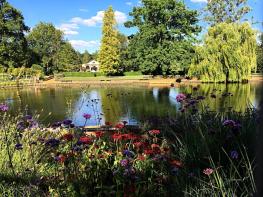The Railway Inn is traditional family-run Inn located beside Culham Railway Station and is the…
Didcot and its railway heritage

5.25 miles (8.4kms)
About the walk
Railway lines criss-cross the flat plains to the south of Oxford, a reminder that this city was built on heavy and light engineering, not just dreaming academics. Railway builders reached Didcot in 1839, making the town into an important stop on the Great Western line. While many of Oxfordshire’s branch lines disappeared in the 1960s, the main routes still carry long chains of freight, as well as commuters and visitors, locals and travellers on their way through the midlands of England.
The village of Long Wittenham grew up on a loop of the Thames, the river celebrated in Jerome K Jerome’s comic novel Three Men in a Boat (1889) – he wrote it while staying at the Barley Mow pub just up the lane. The Church of St Mary dates back to 1120, and is well worth exploring. Inside is a most impressive 12th-century font, made by casting two flat slabs of lead, that was hidden away for its own protection during the Civil War – locals feared that Cromwell’s men would melt it down for bullets – and only rediscovered in 1839. Established on its present site in 1954, Pendon Museum reproduces, in miniature, scenes of the English countryside around 1930 – an evocative but accurate depiction of a bygone age. Exquisitely modelled cottages, farms, fields and chalky lanes recall the quiet charm of the Vale of White Horse. The museum also houses many fascinating railway relics.
When you get back, follow the signs for the Didcot Railway Centre, which also recalls the great days of steam travel in the area. The site is operated by the Great Western Society, formed in 1961 and now one of the oldest preservation societies in Britain. The Didcot Railway Centre opened to the public in 1967, and a tour of the centre reveals the engine shed where visitors can see at first hand the magnificent collection of steam locomotives, many of them painstakingly restored over the years.
Walk directions
From the station forecourt turn left and pass the GWRSA Club House, then turn left at the junction 75yds (69m) beyond. Once through the narrow railway tunnel, turn left (not half left) to join a tarmac path. Follow the path alongside the railway line. Pass alongside modern housing estates, merge with another path and keep a footbridge on the left. Continue to a tunnel beneath the A4130.
Go through the tunnel and leave the outskirts of Didcot, following the path along the field edge. Keep ahead between fence and stream and look for the outline of Wittenham Clumps (see Walk 32) on the far horizon over to the right. Pass a millennium mile post, one of 1,000 such posts to mark the creation of the National Cycle Network, and cross the road at Bow Bridge. Continue towards Long Wittenham, cross a bridge and swing away from the water by a tongue of woodland. Keep on the path between fields and thick hedgerows and enter Long Wittenham. The tarmac path graduates to a lane before reaching Pendon Museum on the left.
Leave the museum and continue to the junction and war memorial and follow the main street. Pass The Plough Inn and The Vine & Spice restaurant and turn left by some thatched and timber-framed barns to reach St Mary’s Church, cutting between two yew trees to the main door.
After visiting the church, return to the gate and swing right to join a footpath. Cross the churchyard to a kissing gate and follow the path as it curves behind the school and across rough grass to reach a drive. Turn left to the road, then turn right and retrace your steps to the war memorial. Keep ahead towards the museum and turn right immediately before a cottage (No 15).
Follow the track, and emerge from some trees to skirt a field, hugging the right-hand boundary. You will soon be briefly reunited with the tranquil River Thames. Continue ahead in the field corner, cross a concrete footbridge and turn right to reach a wooden footbridge. Follow the path across the field towards trees and Appleford’s church spire, just visible beyond. Make for a large oak on the far side of the field, pass into the next pasture and turn right to follow the path to the edge of Appleford-on-Thames.
Make for the churchyard boundary, pass Manor Farm on the right and follow the road between houses. Keep right at the triangular junction and walk along to Appleford Station, from where infrequent trains head back to Didcot Parkway.
Additional information
Surfaced cycle track, urban walkway, clear field paths
Town outskirts and flat farmland
On lead on outskirts of Didcot, in Long Wittenham and Appleford-on-Thames. Under control in vicinity of Bow Bridge
OS Explorer 170 Vale of White Horse
Large car park at Didcot Parkway Station (none at Appleford)
Didcot Parkway Station, Pendon Museum (for visitors)
WALKING IN SAFETY
Read our tips to look after yourself and the environment when following this walk.
Find out more
Also in the area
About the area
Discover Oxfordshire
Located at the heart of England, Oxfordshire enjoys a rich heritage and surprisingly varied scenery. Its landscape encompasses open chalk downland and glorious beechwoods, picturesque rivers and attractive villages set in peaceful farmland. The countryside in the northwest of Oxfordshire seems isolated by comparison, more redolent of the north of England, with its broad views, undulating landscape and dry-stone walls. The sleepy backwaters of Abingdon, Wallingford, Wantage, Watlington and Witney reveal how Oxfordshire’s old towns evolved over the centuries, while Oxford’s imposing streets reflect the beauty and elegance of ‘that sweet city with her dreaming spires.’ Fans of the fictional sleuth Inspector Morse will recognise many Oxford landmarks described in the books and used in the television series.
The county demonstrates how the strong influence of humans has shaped this part of England over the centuries. The Romans built villas in the pretty river valleys that thread their way through Oxfordshire, the Saxons constructed royal palaces here, and the Normans left an impressive legacy of castles and churches. The philanthropic wool merchants made their mark too, and many of their fine buildings serve as a long-lasting testimony to what they did for the good of the local community.
Nearby stays
Restaurants and Pubs
Nearby experiences
Recommended things to do
Why choose Rated Trips?
Your trusted guide to rated places across the UK
The best coverage
Discover more than 15,000 professionally rated places to stay, eat and visit from across the UK and Ireland.
Quality assured
Choose a place to stay safe in the knowledge that it has been expertly assessed by trained assessors.
Plan your next trip
Search by location or the type of place you're visiting to find your next ideal holiday experience.
Travel inspiration
Read our articles, city guides and recommended things to do for inspiration. We're here to help you explore the UK.













